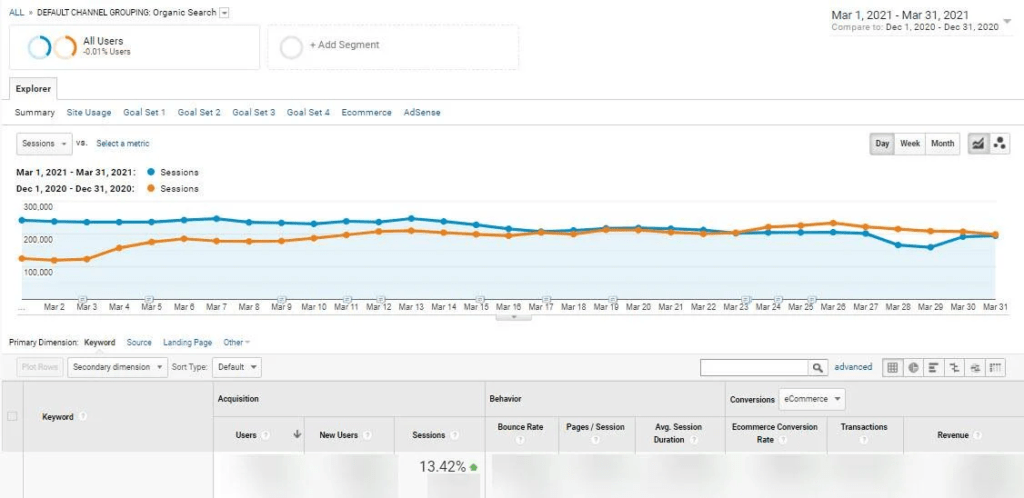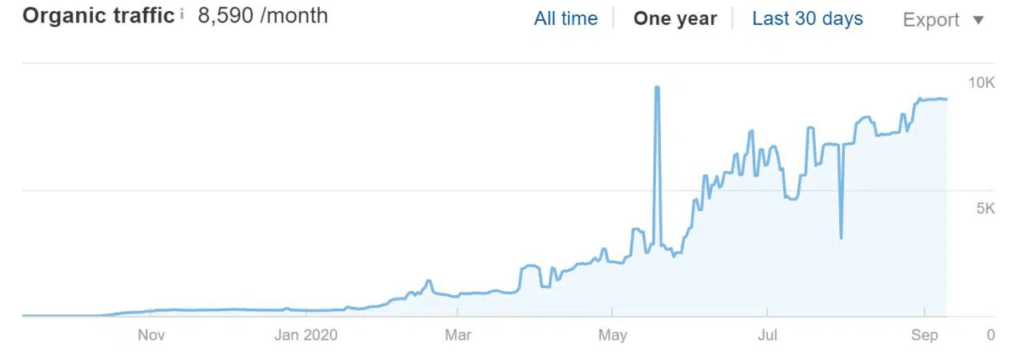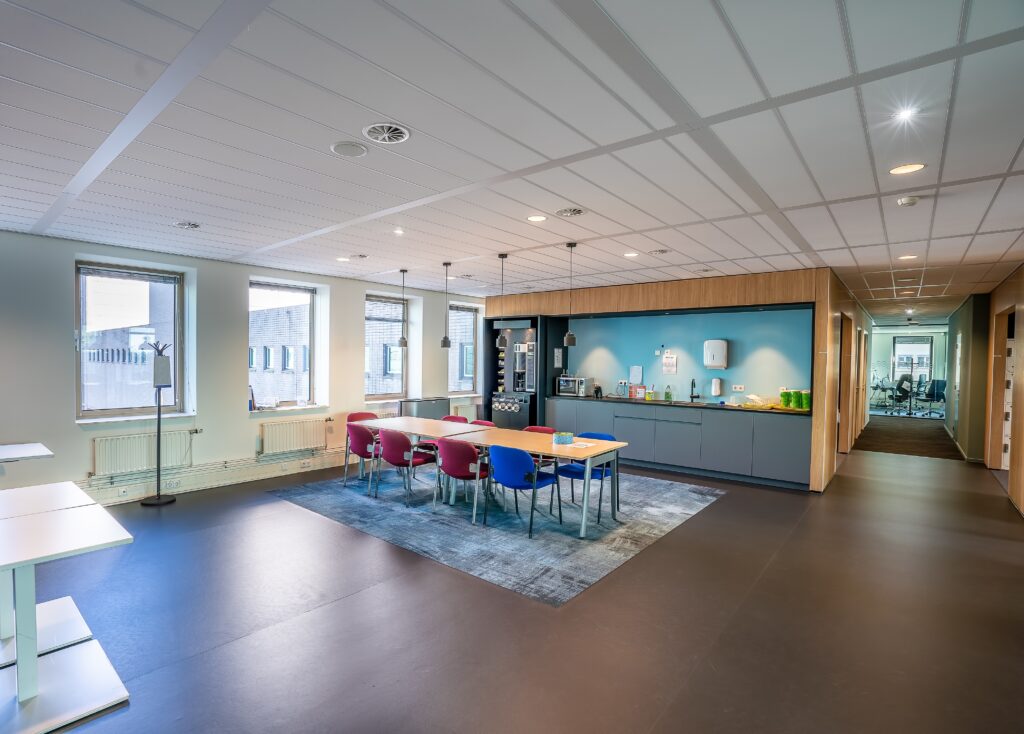“Empires were not built in a day, nor homes in an hour.” —E. A. Bucchianeri This is a complete breakdown of the Canva marketing strategy that helped the brand grow to a $6 billion valuation, generate 20 million monthly active users, and gain customers across 190 countries—including 85% of all Fortune 500 brands. Like a great Empire Canva hasn’t achieved this success overnight. It’s taken years of smart decisions, brilliant execution and prolific vision to build their brand. We’ll be diving deep into the marketing tactics that have helped them acquire 4+ million backlinks and over 270 million visitors a year. This is not just a guide to understanding how Canva dominated the SERP. It’s a masterclass on how to create a content marketing empire that drives real results. In this essay you’re going to learn: How to create content for user intent The role of content directories for SEO How to create scalable landing pages How to create a scalable backlink program The role of responding to current trends for products How to reach thousands of people through your blog An opportunity that even Canva has overlooked So if you want to scale up your content, get more traffic and create a content marketing engine that runs as smooth as butter, you’re going to love today’s essay. This is the story of how Canva was able to create a backlink empire. Let’s get started.Want SaaS teardowns delivered to your inbox?Sign up for the Foundation Labs newsletter today.JOIN THE LAB Using Search Intent To Inspire Landing Pages Canva has two key landing pages for most of their use cases: A page for discovery and a page for creation. Check out the examples below. On the left, we have a page for people who want to design a certificate, and on the right we have a landing page for people looking for certificate templates. Both types of searchers are trying to find a solution like Canva, but the way they view their problem is different. The landing page on the left, which is ranking for phrases like “design certificates” and “create certificates,” gets 16,000 visits a month. The landing page on the right, which ranks for phrases like “certificate template” and “free certificate template,” generates 33,000 hits a month. Both of these landing pages have a role to play in Canva’s SEO strategy, which we’ll dive into throughout this essay. But at the core, Canva’s success with these landing pages comes down to a few fundamental ideas: Understanding the intent of the person using Google Develop a parent and child relationship for other landing pages Create a scalable landing page structure An investment in backlink outreach Creating a strong content culture Understand the intent of the person using Google Search intent is a fundamental part of SEO, but it’s often overlooked by marketers and content creators. Most SEOs only focus on keyword volume when they should be thinking about the intent behind those keywords. Search intent is the goal a person has when they type a query into a search engine. There are four key types of online search intent: Informational: Looking for information (e.g., “who is Prince?”) Navigational: Looking to get somewhere specific (e.g., “Canva blog”) Transactional: Looking for an asset to buy, use or download (e.g., “create invitation”) Investigational: Trying to compare assets (e.g., “Canva vs. Adobe Spark”) Let’s revisit those two landing pages from Canva. Both appeal to transactional intent, but one landing page attracts those who want to do something (“create certificates”) while the other attracts those who want to discover something (“free certificate template”). Using terms from Canva’s site architecture, we’ll call these two types “Create Pages” and “Template Pages.” Create Pages: Use Case CertificatesTitle: Free online certificate maker: create custom designs onlineTop Keywords: certificate maker, create certificate, make your own certificateVolume: 16,000 / month Template Pages: Use Case CertificatesTitle: Customize 1,649+ certificates templates onlineTop Keywords: certificate template, free certificate template, award certificate templateVolume: 32,400 / month Landing Pages & A Directory For Niche Intent & Use Cases One of the strategies that Canva has embraced to perfection is the use of content directories focused on different use cases and long tail keywords. The site architecture being used for both do (Create) and discover (Template) pages is a thing of beauty: For example in the the do (create) pages for “invitations” the URL would be: Canva.com / templates / search / invitations / save-the-date / invitations is the asset and / save-the-date is the niche-asset For the discover (template) pages for invitations the URL would be: Canva.com / Create / Invitations That URL would have a link that then drove back to various invitation templates like: Canva.com / templates / search / invitations / save-the-date Canva.com / templates / search / invitations / christmas Canva.com / templates / search / invitations / wedding Canva.com / templates / search / invitations / baby-shower Across the entire site, we found that Canva has more than 55 parent pages, each with up to 78 child pages. For example, here’s a look at the parent and child relationship for landing pages focused on “Invitations” and the various keyword variations that make up child landing pages (aka niche types of invitations): This isn’t even all of the child pages for invitations. There are 73 of them in total! But each of these child pages has been able to capture quite a few backlinks and as a result generate a significant amount of traffic. The “Invitations” category alone has 900 backlinks and generates more than 65,000 organic visitors per month across the parent and child pages. WHY BACKLINKS MATTER: Backlinks are valuable for SEO because they act as a vote of confidence from one site to another. Search engines track backlinks to determine the trustworthiness of your content—the more links your page can get from other trusted pages, the better that page will look to search engines. All resource metrics can be analyzed and monitored by a backlink management tool, which will show the authority of the domains, links types (dofollow or noffolow), website traffic, etc. Here’s a snapshot of the distribution











